
The Migration seems to have gone south, quite literally. The heavy rains of a few days ago seem to have confused the mega herds that had streamed into the Mara Triangle. The anticipation grew as they slowly mowed their way north towards the river, setting the stage for what we expected would be the most spectacular crossings of the season. Then the heavens opened consecutively for a few days. Storms raging from the north left areas of the Mara Triangle waterlogged – and the herds decided to start heading back.

The big question in everyone’s mind right now is, what prompted the sudden turnaround? I have a theory. Not long ago, there were a large number of fires around the Serengeti border – including the southern parts of the Sand River and the southern regions of the Mara Triangle, though the bigger, more expansive fires were in Tanzania. When the first of the big herds arrived in the area, the landscape was scorched and devoid of grazing. The wildebeest thundered up quickly into the northern parts of the Triangle where there was plenty of long grass to eat. But while they are happy to eat long grass, they prefer shorter green shoots.
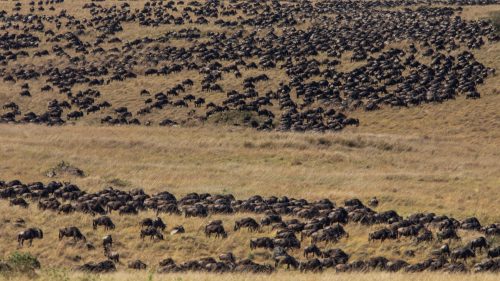
While the Migration continued to flood north, we had a period of consecutive afternoon and overnight showers. The burnt areas suddenly exploded with life and fresh green grass covered the southern Mara and northern Serengeti. The wildebeest reacted almost immediately, turning south and marching down to the border towards the burnt areas where they have now spread out like ants dotted across the landscape.
Now the question that remains is just how long the short, green grass will last? And when it is finished, will they turn back and move north again into the Triangle, or will they continue south, into Tanzania?
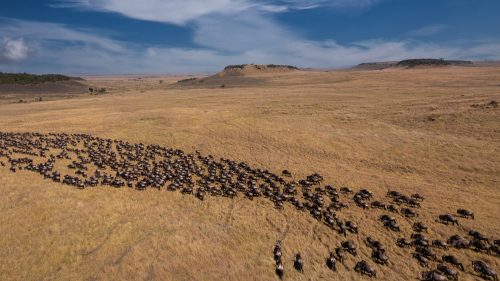

This new development in the herd’s movement clearly depicts the impact humans have across the Mara-Serengeti ecosystem. The burning of wide expanses can have a negative effect on some of the smaller species that heavily depend on the cover of grassland. But controlled burning is important as it helps maintain open savannahs by keeping thorny scrub and trees at bay.

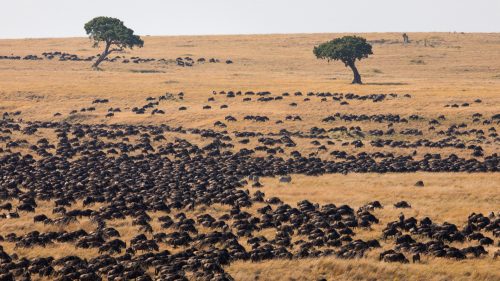
The smaller herds that crossed the Sand River and moved towards the eastern side of the Mara River are now crossing in small batches into the Triangle. Unlike the Sand River crossings, the waters here are infested with crocodiles and we have seen some interesting and successful attempts by the crocodiles in securing a meal.
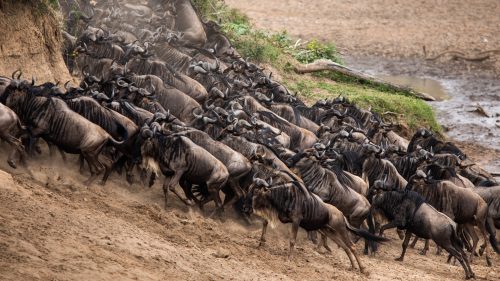

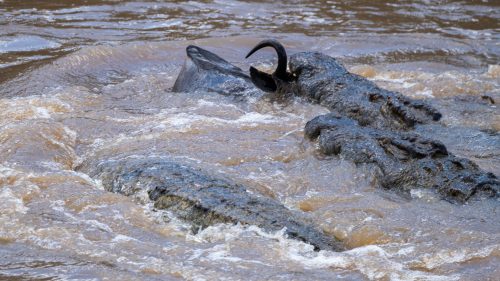
On the banks of the river, dangers are still ever-present with leopards and lions waiting for an opportunity to strike. Sammy our head guide was very fortunate to capture some beautiful shots of a leopard stalking its prey.

Speculating on what will unfold in the coming weeks, our guides are fairly convinced the herds will turn back north sooner rather than later. How soon? That is still anyone’s guess. One thing is for certain – we haven’t yet had our fill of these single-minded mammals swarming across the Triangle. The predators, too, will surely be hoping they return. This is without a doubt one of the most unusual migrations in years.

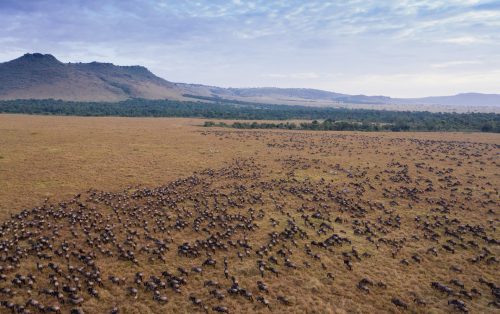
This time last year, the mega herds were spread out across the plains right below Angama Mara, as if swarming towards the lodge.
Filed under: This Week at Angama
Subscribe for Weekly Stories
Comments (0):

Angama Safari Offers